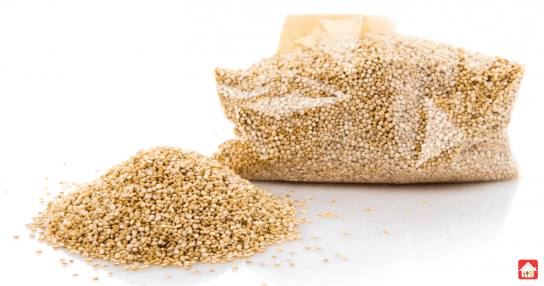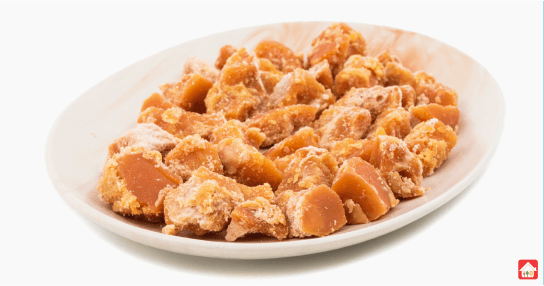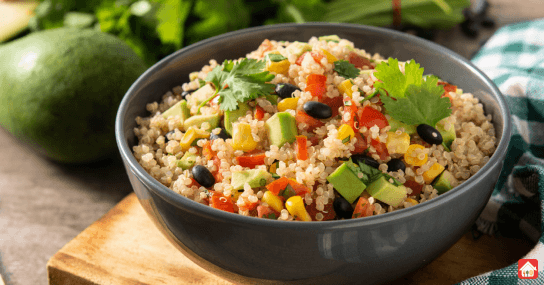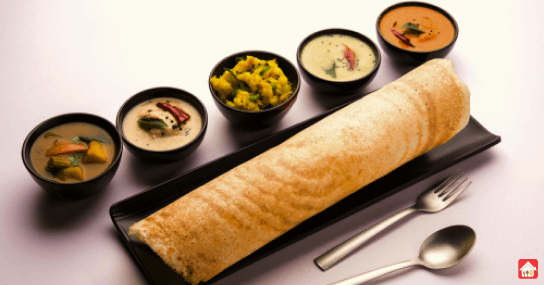Table of Contents
Curd and spices such as turmeric come to mind when considering some common ingredients in Indian cuisine. You may not know many other elements, but they are also extremely healthy.
The spices you use to cook meals are among the most nutritious ingredients. The Mediterranean diet is a well-known diet in terms of geographical regions. India is the best place to go for the healthiest, traditional cuisine.
India is a country that consumes a lot of plant-based proteins. Whole grains, lentils, fermented food, beans, homemade curd, etc., are all popular. Food items vary depending on where you live, and you may also know that you eat different flours based on the season. For example, we consume wheat flour in the summer, and in the winter, we eat bajra.
Many of us need to familiarize ourselves with the marketing strategy of multiple grains because, if you look at our food history, we used to eat different flours according to the season, and it was not necessary to mix multiple flours.
You can find lentils, spices, beans, and millet, a whole grain, in Indian food. Indian food is rich in nutrients and good for health, according to research conducted by the Indian Institute for Technology Jodhpur. According to the article, Ayurveda is the traditional Indian medicinal system that believes food can have both nutritional and medicinal value.
Alternatives that are Nutrient Dense to Traditional Ingredients
Millets

Millets are used in various Indian dishes because of their nutrient-rich composition. These gluten-free millets are a great way to prevent and cure many health problems. Millets are rich in fiber and minerals such as magnesium, phosphorous, iron, calcium, zinc, and potassium.
Millets are a healthy and delicious meal. It is recommended to cook millet as porridge, especially for children and older adults. Millets contain high protein and starch, making them a healthy addition to your daily diet.
Quinoa

Quinoa, a pseudo-cereal, is rich in minerals, vitamins, and fiber. Although quinoa is a whole grain, it’s a seed of a plant known as goosefoot. Quinoa has a nutty flavor when cooked. You can also make it into flour, flakes, and other foods such as bread and pasta. Quinoa contains protein, fibers, iron, copper, and vitamin B6. It is also a good source of folate, manganese, and phosphorous. It is a very healthy food because of its unusual composition, which includes a balance of minerals, antioxidants, vitamins, fatty acids, minerals, and protein.
Jaggery

Jaggery is a natural, organic sweetener. Some people consider it a superfood because of its higher levels of minerals and vitamins and lower sucrose content than sugar. However, jaggery is still a form of sugar and should be used sparingly. Sugar is a granular texture, whereas jaggery has a semisolid consistency.
Jaggery has a golden yellow color with a sweet, winy taste and color similar to brown sugar. Refined white sugar contains no minerals, vitamins, fats, or proteins. Jaggery is made up of longer chains and more complex molecules than sugar. It is slower than sugar processed and takes longer to digest. The body is easier to digest.
Innovative Ways to Use These Ingredients in Indian Cuisine
Millet
In many supermarkets, millet comes in a variety of forms. You can find millet in many forms, including dried, puffed up like rice, or flour. You can cook dried millet like couscous, quinoa, or rice. Grinding millet is a good substitute or addition for whole wheat flour when baking. Puffed millet is a great snack or can replace puffed rice.
Any form of millet can be an excellent addition to a variety of diets. Here are some suggestions on how to include millet in your diet.
- In a pilaf, substitute millet instead of rice.
- Make millet bread using ground millet.
- Blend ground millet with your next batch of waffles.
- Popcorn is replaced with puffed millet.
- Sprinkle puffed millet on your cereal.
Quinoa
Here are Indian recipes that use quinoa.
Quinoa Upma

Quinoa upma is a great breakfast or healthy snack. You can choose to replace rawa suji with quinoa.
Quinoa Dosa

Quinoa is used to recreate this South Indian breakfast. This healthier alternative to traditional rice dosa can be made home using four ingredients.
Curd Quinoa
Curd rice is a popular South Indian dish. This version is healthier. This recipe is good for stomach upsets and is great during hot summer days.
Jaggery
Use the unrefined Sugar in these common ways:
In confections and desserts
Jaggery is the main ingredient in ladoos, simple Indian sweets made with a mixture of ingredients such as atta (whole wheat flour), nuts, dried fruits, and Ghee. They can be found both in informal and formal settings.
Thai curries

Jaggery’s complex sweetness is an excellent addition to savory stews such as moong dal or spicy sauces.
Ayurvedic Medicine
Jaggery contains antioxidants and vitamins. Its health benefits make it a staple in Ayurvedic Medicine, which uses tinctures to balance specific doshas
Tips on Buying and Storing Healthy Ingredients
By storing ingredients correctly, these tips can enhance your cooking.
Storage of Ingredients with High Moisture
Fresh produce is good, but we buy a week’s worth of food in the fridge because there must be more time to shop daily. Each fruit and vegetable is different, with different storage needs. Vegetables like sweet corn, coriander, and others are heavy breathers. Apples and oranges, as well as tomatoes, cucumbers, and plums, are light breathers. Food items are categorized according to their breathing patterns. The containers should have a corrugated bottom to prevent moisture from contacting the other fruits and vegetables.
Storing Dry Ingredients
Fry herbs, spices, grains, and other dry storage items are the most common. They are low in moisture but can spoil quickly when they come into contact with moisture or air. These ingredients are kept in dispensers that can preserve essential oils and hold the fragrance and aroma of snacks, lentils, and spices longer. Keep grains and pulses in an airtight container to avoid moisture.
Extending the Shelf Life of Certain Items
The shelf life of daily consumables such as tomatoes, eggs, and so on is concise. These can be frozen and stored for longer. Keep eggs in a freezer-safe container. Slice and roast squishy tomatoes and store them in the refrigerator. Peas are stored in a zip lock bag in the deep freezer throughout the year. The peas are suitable for storing and using for 3-4 months.
Conclusion
We hope you will add these great ingredients to your daily diet. If you need to include any, you can still get the health benefits of your grandmother’s and mother’s recipes.


